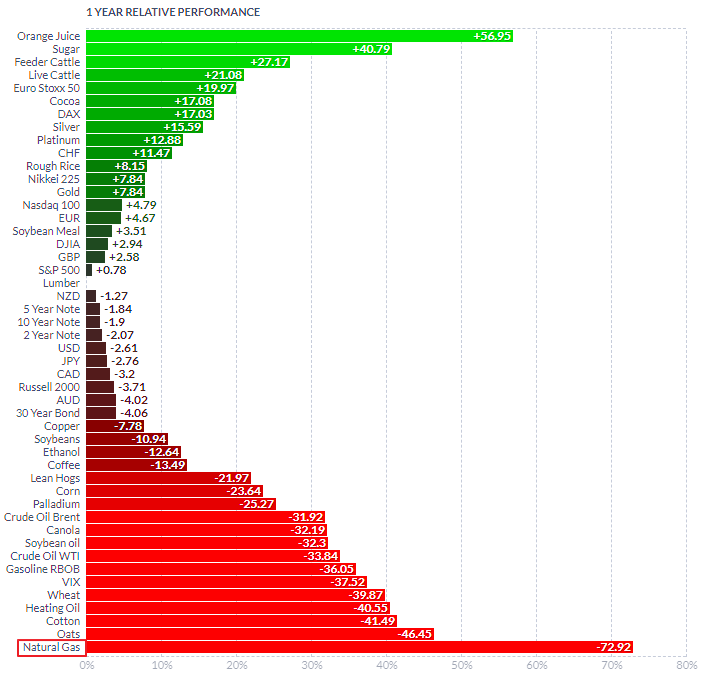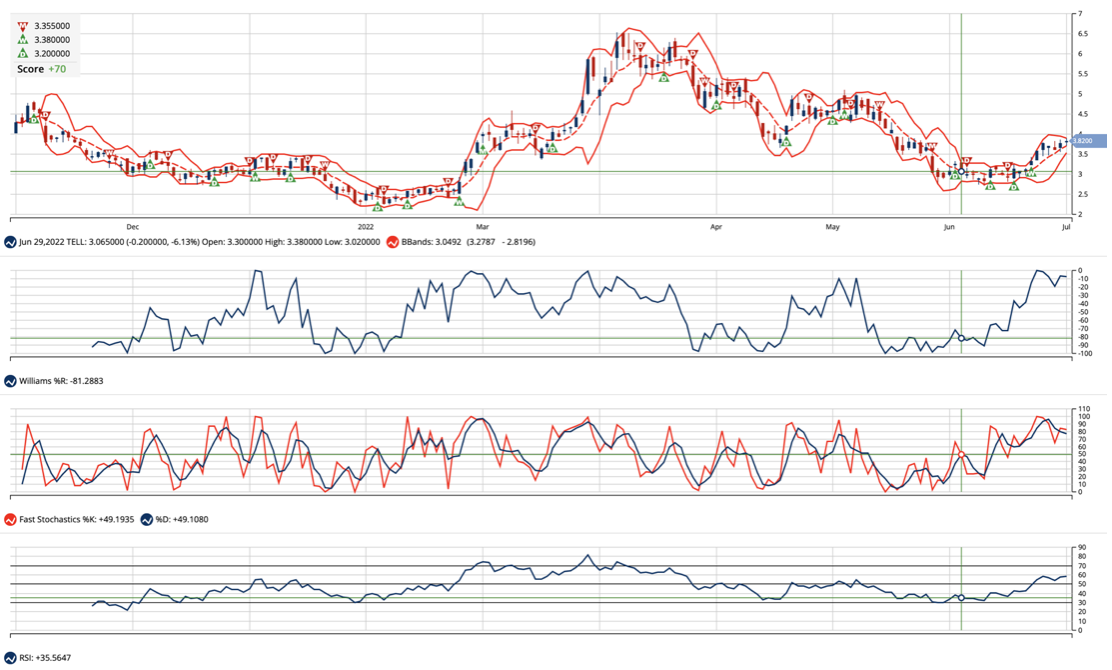Oil behemoths Exxon Mobil Corporation (XOM) and Chevron Corporation (CVX) recently reported third-quarter results, indicating enduring difficulties in accelerating oil production growth. Earnings have significantly dropped from the year-ago quarter, failing to meet the Wall Street projections. Nonetheless, both firms reported an upswing in earnings quarterly.
XOM's oil production has tumbled, while CVX has faced setbacks impacting key growth endeavors in Kazakhstan and the major hubs of oil production, including the Permian Basin in West Texas and New Mexico.
The market reaction to the earnings reports was swift and severe. CVX’s shares plunged about 7%, and a descent of 1.9% in XOM's shares was observed despite rising oil prices due to escalating tensions in the Middle East. This response underscores investor anxieties about these fossil fuel behemoths' long-term viability and fiscal discipline relative to sectors like technology.
Both companies confirmed technical issues in the Permian region, including constraints on wastewater production, high concentrations of carbon dioxide in natural gas, and challenges encountered by production partners during fracking operations. The complications of oil production expansion, coupled with operational problems, are anticipated to influence a surge in industry-wide costs.
However, not all seems grim for the oil corporations. The oil majors are reportedly amplifying their capital investments within the oil and gas sector, undeterred by growing global consensus on a shift towards clean energy alternatives. The acquisitions underscore the enduring interest of the oil companies in profitable oil and gas ventures.
These strategic moves suggest that these corporations do not anticipate a decline in oil demand in the future. Instead, they lean toward believing that oil's role will remain pivotal in the world's energy matrix for the foreseeable future.
The International Energy Agency's (IEA) forecast of oil demand peaking by 2030 amid expanded use of renewable energy sources. The prediction undermines the justification for increased expenditure on fossil fuels and further prompts the question of why cash-rich oil titans are not pivoting toward green energy ventures.
The answer lies partly in the clean energy transition being a long-term, costly process, complicated further by the current economic backdrop of persistent inflation, escalating borrowing expenses, and continual supply chain difficulties.
For the past two years, geopolitical instability – from Russia's military aggression in Ukraine to long-standing conflicts in the Middle East, has fostered unpredictability in energy prices. This has prompted concerns over energy demand, infusing uncertainties in the market. Additionally, easing oil and natural gas prices has exacerbated the profitability challenges of XOM and CVX.
A cautious approach has pervaded the market, with participants adopting a vigilant stance, awaiting the outcomes of pivotal events, including the U.S. Federal Reserve policy meeting and China’s latest manufacturing data.
In its most recent Commodity Markets Outlook, the World Bank projected global oil prices to reach around $90 a barrel during the last quarter of the year before diminishing to an average of $81 a barrel throughout the coming year as global economic growth decelerates. Such a decline could cast a shadow over the financial health of XOM and CVX.
These corporations, heavily vested in the extraction and sale of oil and gas, stand at risk of substantial revenue reductions, which could compromise their net profitability. Dwindling prices could pose formidable challenges for these companies in securing funds for new ventures and investments, jeopardizing their future profitability.
On the flip side, however, OPEC+ and Russia’s prolonged production cuts, in addition to the geopolitical turmoil, could exacerbate supply chain disruptions, propelling oil and gas prices in the future. This development creates a conducive climate for extraction and ensuing production activities.
Let’s see some other factors that have the potential to influence the stocks’ performance in the near term:
With a market cap of over $419 billion, XOM explores and produces crude oil and natural gas in the United States and internationally.
The cash influx enabled XOM to authorize a $60 billion acquisition of Pioneer, which attracted international media attention. Experts predict the strategic maneuver could boost XOM's domestic oil production twofold, catapulting the company into the top tier of American producers. It could stimulate added consolidation within this fragmented sector, strengthening American shale producers' role as the commanding players in the international oil market.
However, XOM's third-quarter profits fell by over half of its record high last year due to a decline in oil and gas price realizations, although the company's refinery throughput rose to 4.2 million barrels a day, the most since XOM merged with Mobil 24 years ago. The energy giant’s revenue slid 19% year-over-year to $90.76 billion, while non-GAAP earnings per share reached $2.27, falling short of analysts' predictions.
The dwindling profits were influenced by an approximately 60% decrease in natural gas price realizations and a 14% reduction in oil price realizations. The company also reported a 69.9% decline in earnings from its chemical products division due to increased feedstock prices and overproduction.
In the quarter, it returned $8.1 billion to the shareholders, comprising $3.7 billion in dividends and $4.4 billion in share buybacks.
Moreover, XOM announced an increase in its fourth-quarter dividend to $0.95 per share, payable on December 11, honoring its excellent history of shareholder returns. A testament to the company's reputation is its consistent record of paying dividends for 40 uninterrupted years.
Its annual dividend rate of $3.80 per share translates to a dividend yield of 3.60% on the current share prices. The company’s dividend payouts have grown at a CAGR of 1.5% over the past three years and 2.7% over the past five years.
The stock trades lower than the 50-, 100-, and 200-day moving averages, indicating a downtrend. However, Wall Street analysts expect the stock to reach $128.32 in the next 12 months, indicating a potential upside of 21.6%. The price target ranges from a low of $105 to a high of $150.
Institutions hold roughly 60.4% of XOM shares. Of the 3,637 institutional holders, 1,589 have increased their positions in the stock. Moreover, 147 institutions have taken new positions (9,154,521 shares).
For the fiscal fourth quarter ending December 2023, analysts expect its revenue and EPS to be $92.28 billion and $2.20, respectively.
Boasting a market cap of over $275 billion, CVX offers administrative, financial management, and technology support services for energy and chemical operations.
The firm's recent $53 billion acquisition of Hess, recognized as one of the largest operators in North Dakota's Bakken shale play, substantiates its massive investment amid the global shift towards cleaner energy. Even though this transaction could slightly increase the region's oil production, industry analysts do not anticipate a revival to its peak pre-pandemic boom days.
Bakken oil production is anticipated to drop to 1.15 million bpd from 2026 and remain stagnant until 2030. A slow decay will follow this due to depleting reserves. It is yet to be ascertained if an infusion of new investments or technological advancements can counteract a longer-term decrease in Bakken output.
CVX also emphasizes the importance of consistent dividend distribution, demonstrating an unwavering commitment to operational diversity, having done so for an impressive 35 consecutive years. This reliability is quite remarkable considering the unpredictable nature of the energy sector.
In 2023, the company paid a dividend of $6.04 per share, which translates to a dividend yield of 4.18% on the current share prices. The company’s dividend payouts have grown at a CAGR of 5.6% over the past three years and 6% over the past five years. Although, it is worth noting that the decline in dividend payout rate over time might adversely influence investors seeking a steady source of passive income.
CVX adopts a moderate approach concerning leverage. During periods with low oil prices, the company can incur debt to finance its capital investment needs and maintain dividend payouts. When energy prices rebound, which historically they always have, the company can offset the debt. This prudent strategy offers reassurance to even the most conservative investors about the integrity of the company's dividend capabilities.
For the fiscal third quarter that ended September 30, 2023, CVX's upstream production segment earnings dipped 38.2% year-over-year to $5.76 billion. However, it increased only 16.6% from the second quarter, despite the substantial increase in oil prices.
Profit in CVX's non-U.S. production segment, accounting for about two-thirds of its total output, declined 37.7% year-over-year but increased about 12% quarterly. Its U.S. production earnings increased 26.4% quarterly but declined 39% year-over-year.
The U.S. net oil-equivalent production was up 20% year-over-year and set a new quarterly record, primarily due to the acquisition of PDC Energy, Inc., which supplemented the quarter's output with an additional 179,000 oil-equivalent barrels per day, and net production increases in the Permian Basin.
The stock trades lower than the 50-, 100-, and 200-day moving averages, indicating a downtrend. However, Wall Street analysts expect the stock to reach $189 in the next 12 months, indicating a potential upside of 30.9%. The price target ranges from a low of $166 to a high of $215.
Institutions hold roughly 71.4% of CVX shares. Of the 3,473 institutional holders, 1,718 have increased their positions in the stock. Moreover, 203 institutions have taken new positions (9,253,853 shares).
For the fiscal fourth quarter ending December 2023, analysts expect its revenue and EPS to come at $54.46 billion and $3.68, respectively.
Considering the oil stocks’ tepid price momentum, mixed analyst estimates, and financials, it could be wise to wait for a better entry point in the stocks.


